© 2025 MJH Life Sciences™ , Patient Care Online – Primary Care News and Clinical Resources. All rights reserved.
How to Help Patients Quit Smoking: 10 Questions for Primary Care
Take this quick 10-question quiz to find out what you can do to help your patients live tobacco-free.
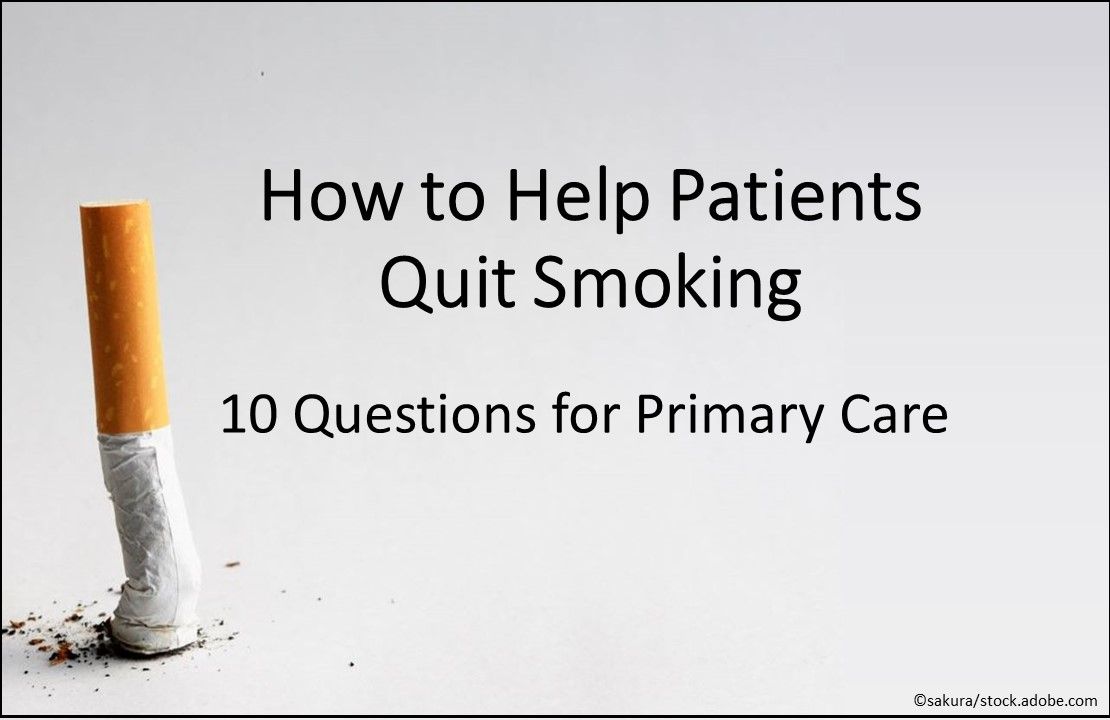
For patients who are ready to quit, the 5As model (ask, advise, assess, assist, arrange) summarizes the activities a physician can use to help. For those who are not ready to quit, the 5Rs model (relevance, risks, rewards, roadblocks, repetition) suggests content areas to address in counseling interventions to increase motivation to quit.
How can you help? Take this 10-question quiz based on the WHO’s Toolkit for Delivering the 5A’s and 5R’s Brief Tobacco Interventions in Primary Care to find out.
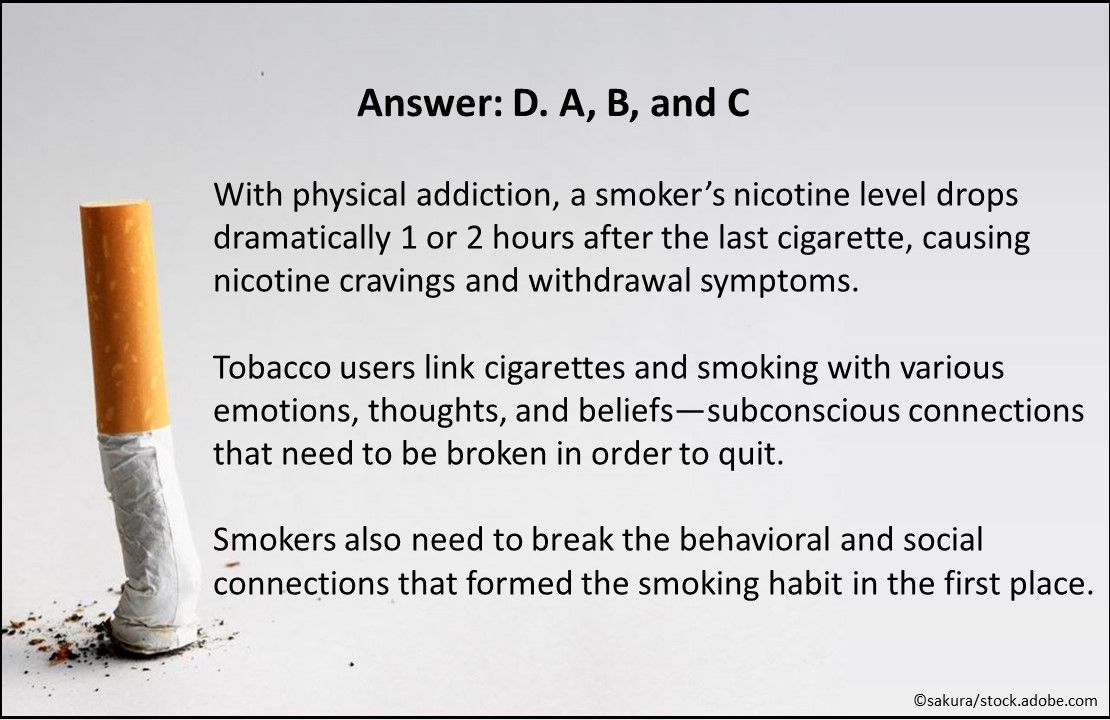
Answer: D. A, B, and C. With physical addiction, a smoker’s nicotine level drops dramatically 1 or 2 hours after the last cigarette, causing nicotine cravings and withdrawal symptoms. Tobacco users link cigarettes and smoking with various emotions, thoughts, and beliefs-subconscious connections that need to be broken in order to quit. Smokers also need to break the behavioral and social connections that formed the smoking habit in the first place.
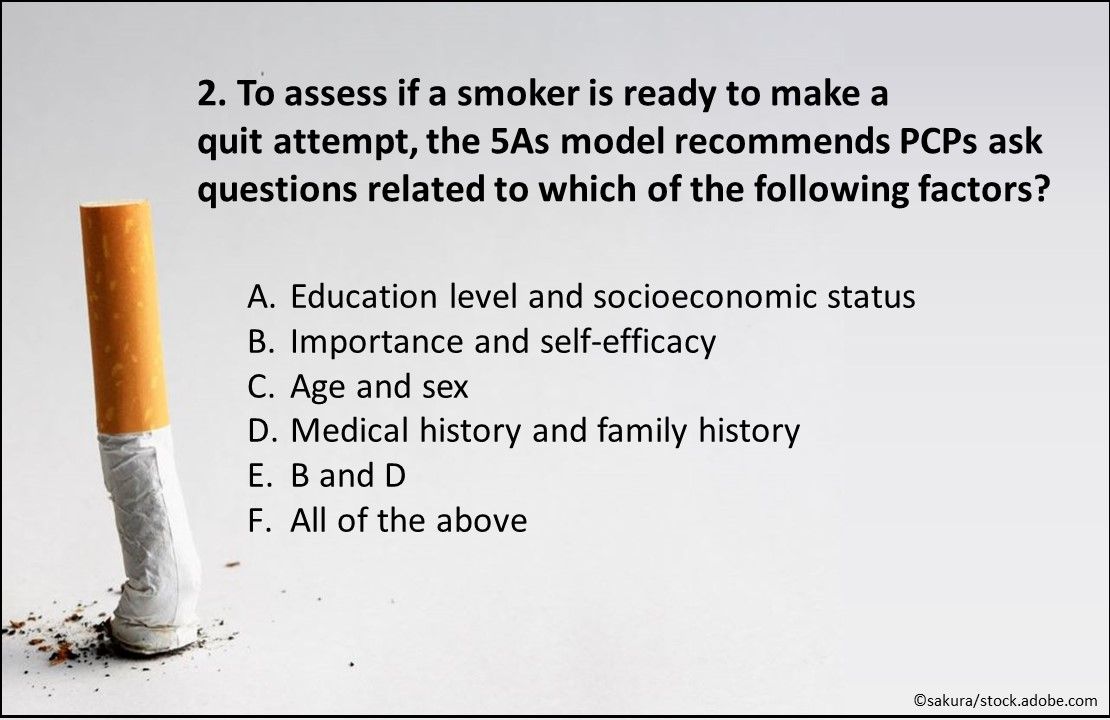
Question 2. To assess if a smoker is ready to make a quit attempt, the 5As model recommends PCPs ask questions related to which of the above factors?
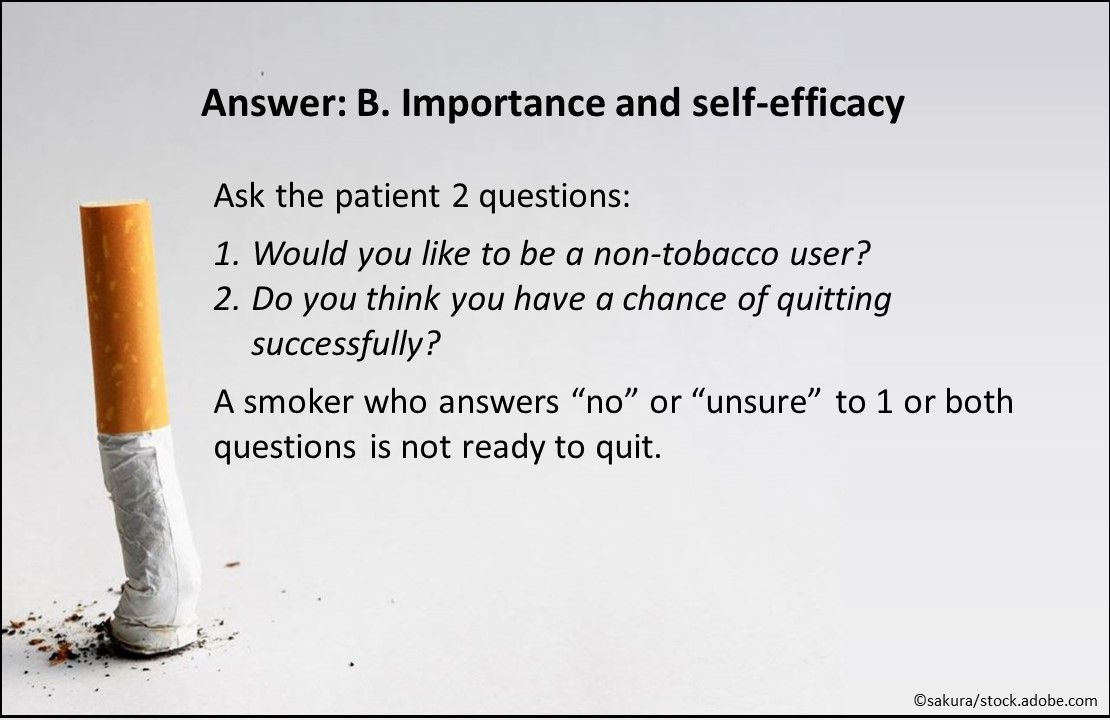
Answer: B. Importance and self-efficacy. Ask the patient 2 questions: “Would you like to be a non-tobacco user?” and “Do you think you have a chance of quitting successfully?” A smoker who answers “no” or “unsure” to 1 or both questions is not ready to quit.
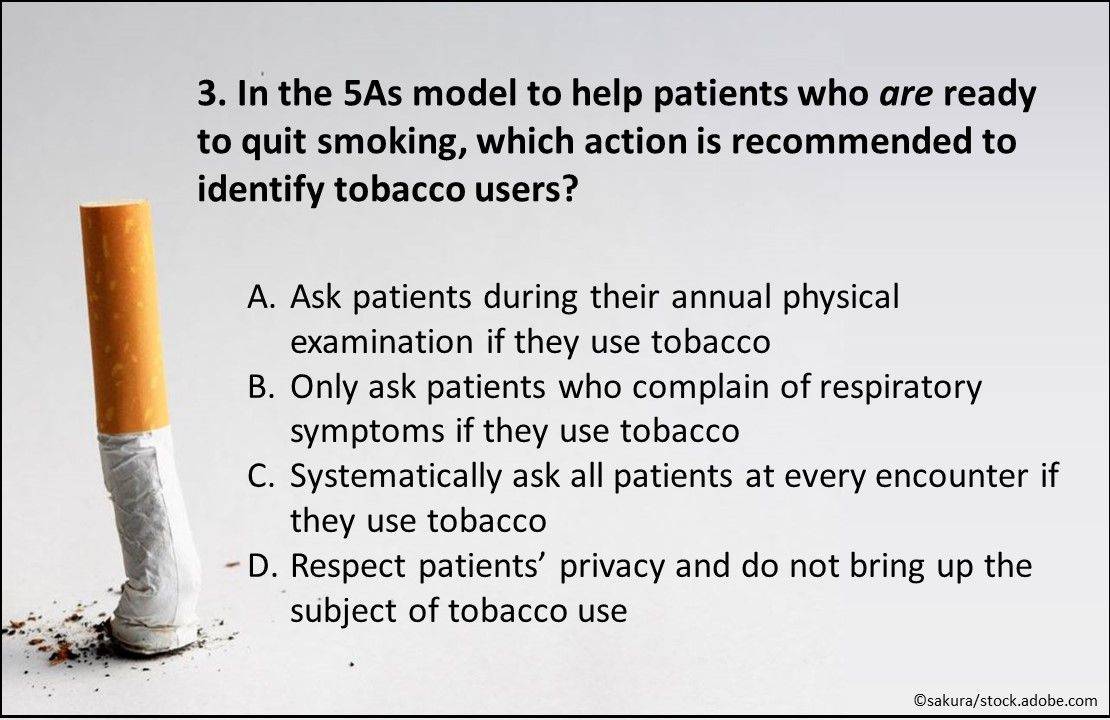
Question 3. In the 5As model to help patients who are ready to quit smoking, which action is recommended to identify tobacco users?
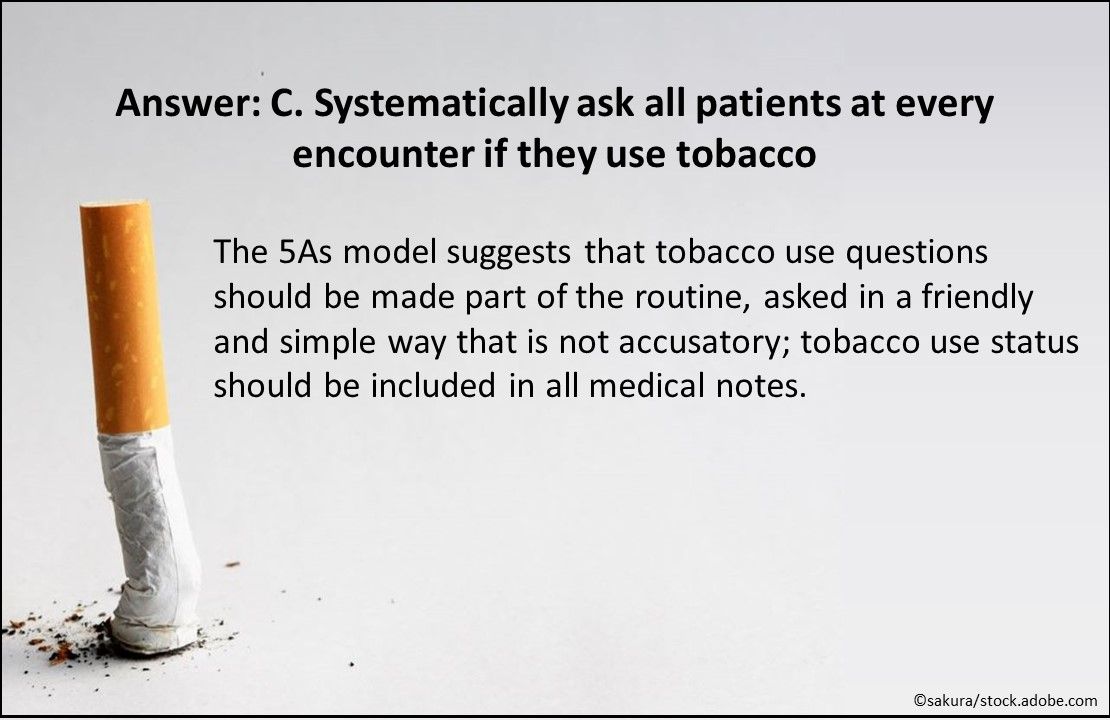
Answer: C. Systematically ask all patients at every encounter if they use tobacco. The 5As model suggests that tobacco use questions should be made part of the routine, asked in a friendly and simple way that is not accusatory; tobacco use status should be included in all medical notes.

Question 4. Which of the above strategies does the 5As model recommend to PCPs when advising smokers about cessation?
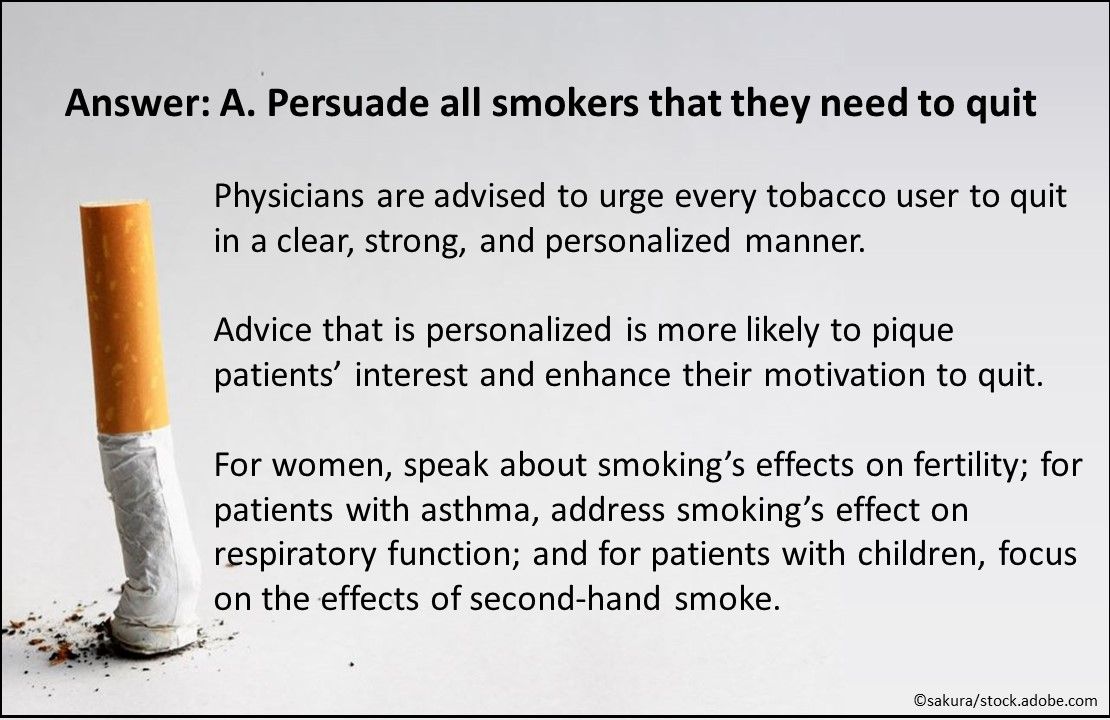
Answer: A. Persuade all smokers that they need to quit. Physicians are advised to urge every tobacco user to quit in a clear, strong, and personalized manner. Advice that is personalized is more likely to pique patients’ interest and enhance their motivation to quit. For women, speak about smoking’s effects on fertility; for patients with asthma, address smoking’s effect on respiratory function; and for patients with children, focus on the effects of second-hand smoke.
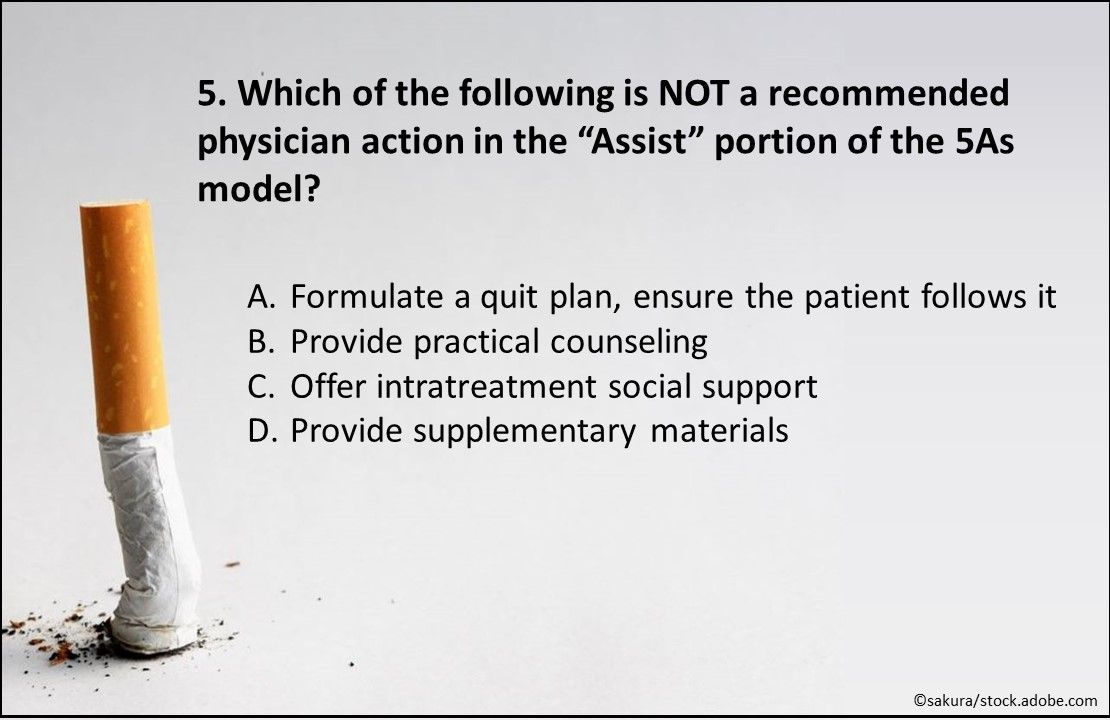
Question 5. Which of the above is NOT a recommended physician action in the “Assist” portion of the 5As model?
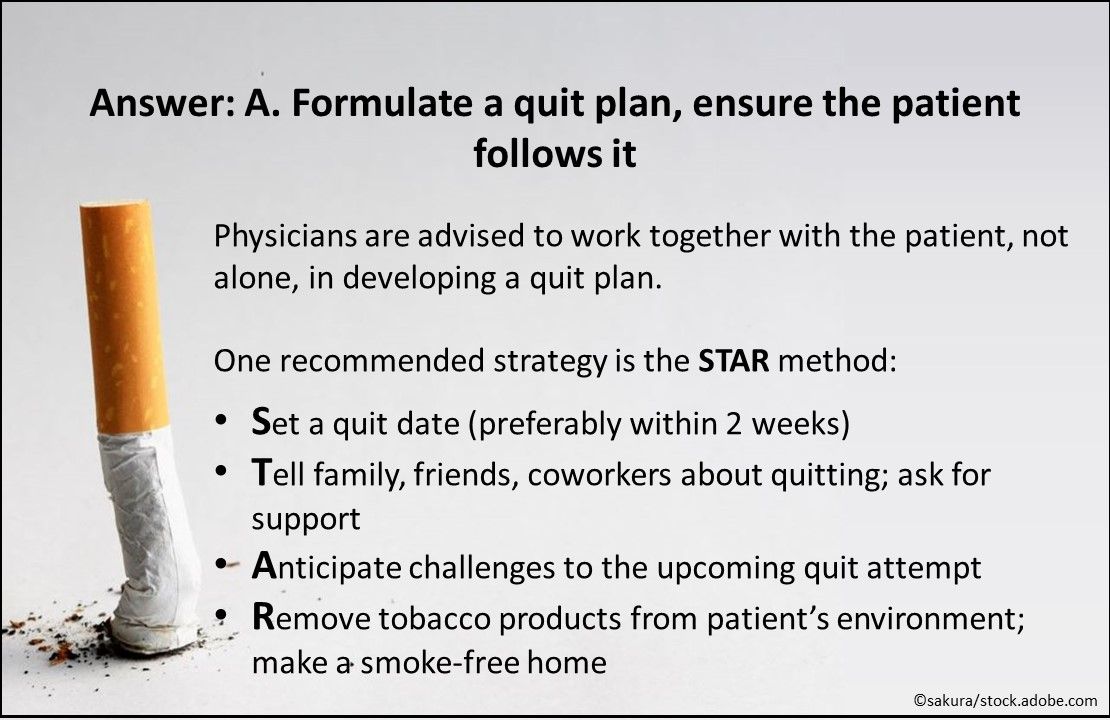
Answer: A. Formulate a quit plan and ensure the patient follows it. Physicians are advised to work together with the patient, not alone, in developing a quit plan. One recommended strategy is the STAR method: Set a quit date, preferably within 2 weeks; Tell family, friends, and coworkers about quitting and ask for support; Anticipate challenges to the upcoming quit attempt; and Remove tobacco products from the environment and make a smoke-free home.
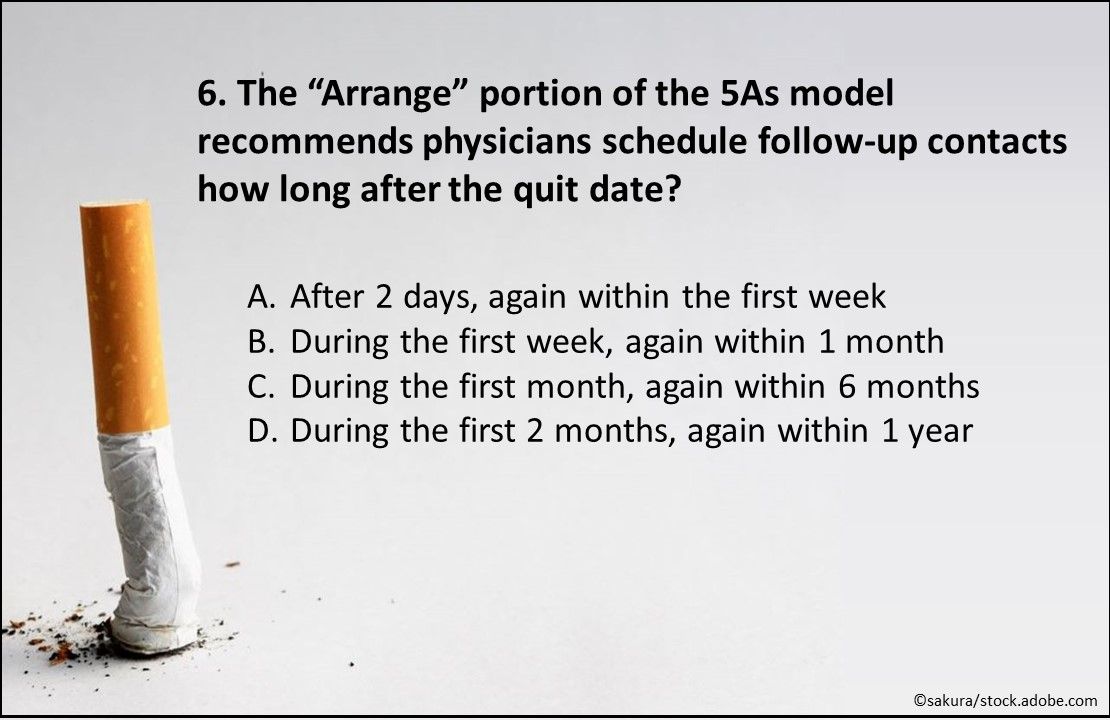
Question 6. The “Arrange” portion of the 5As model recommends physicians schedule follow-up contacts how long after the quit date?
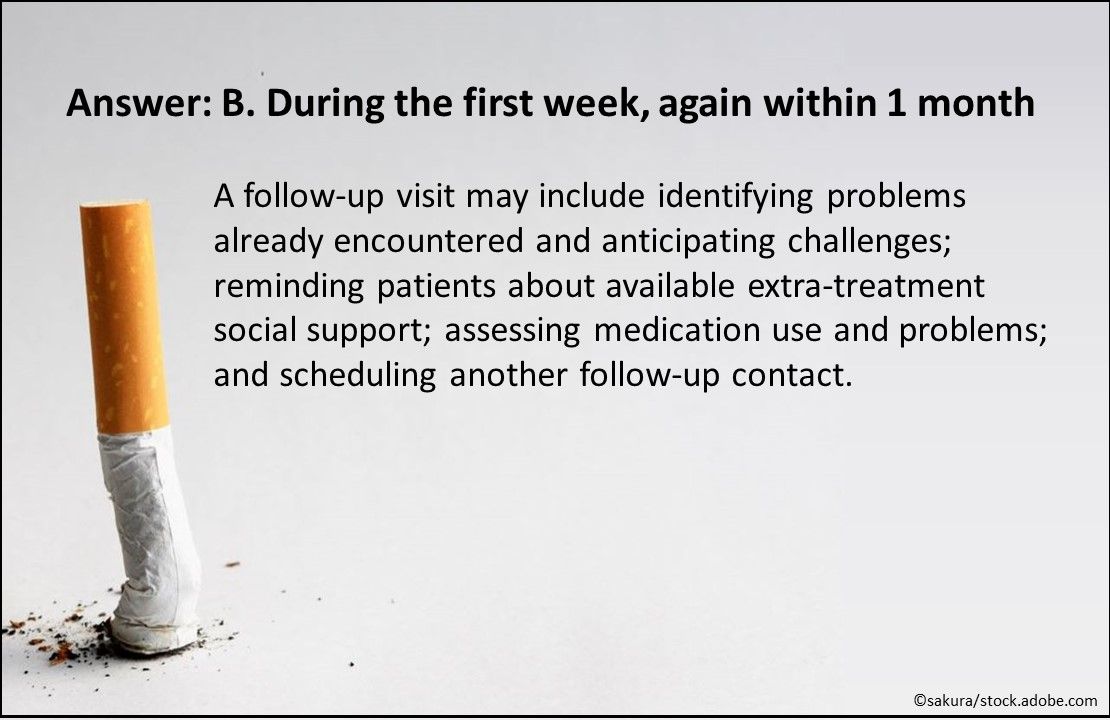
Answer: B. During the first week and again within 1 month. A follow-up visit may include identifying problems already encountered and anticipating challenges; reminding patients about available extra-treatment social support; assessing medication use and problems; and scheduling another follow-up contact.
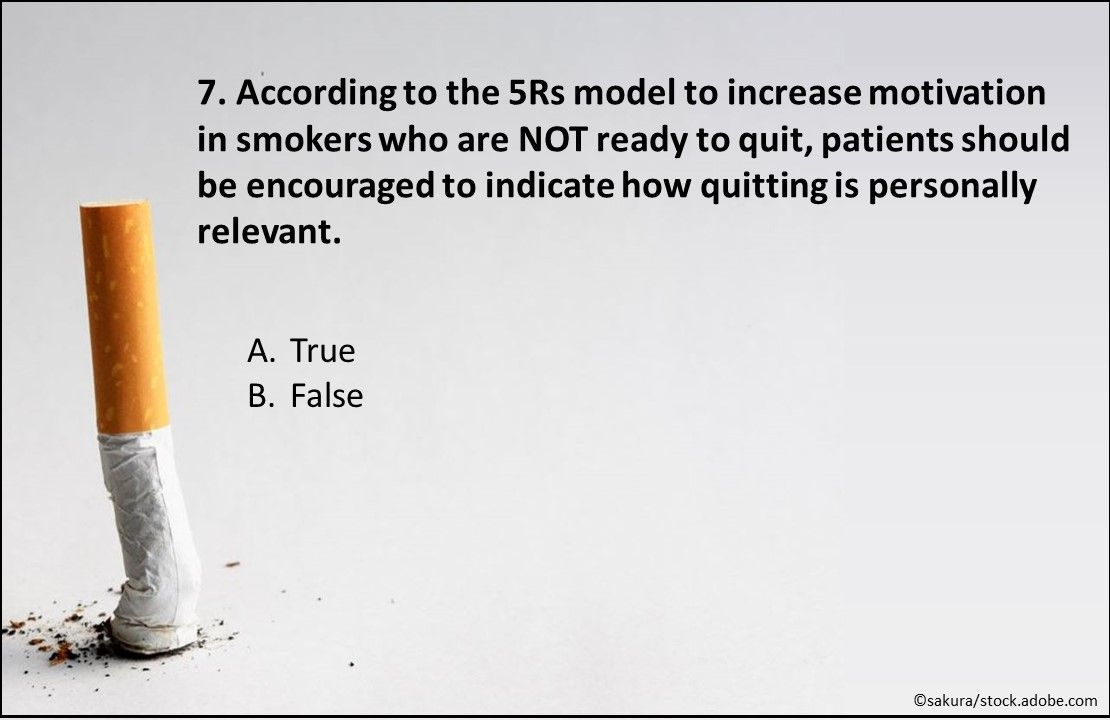
Question 7. True or false? According to the 5Rs model to increase motivation in smokers who are NOT ready to quit, patients should be encouraged to indicate how quitting is personally relevant.
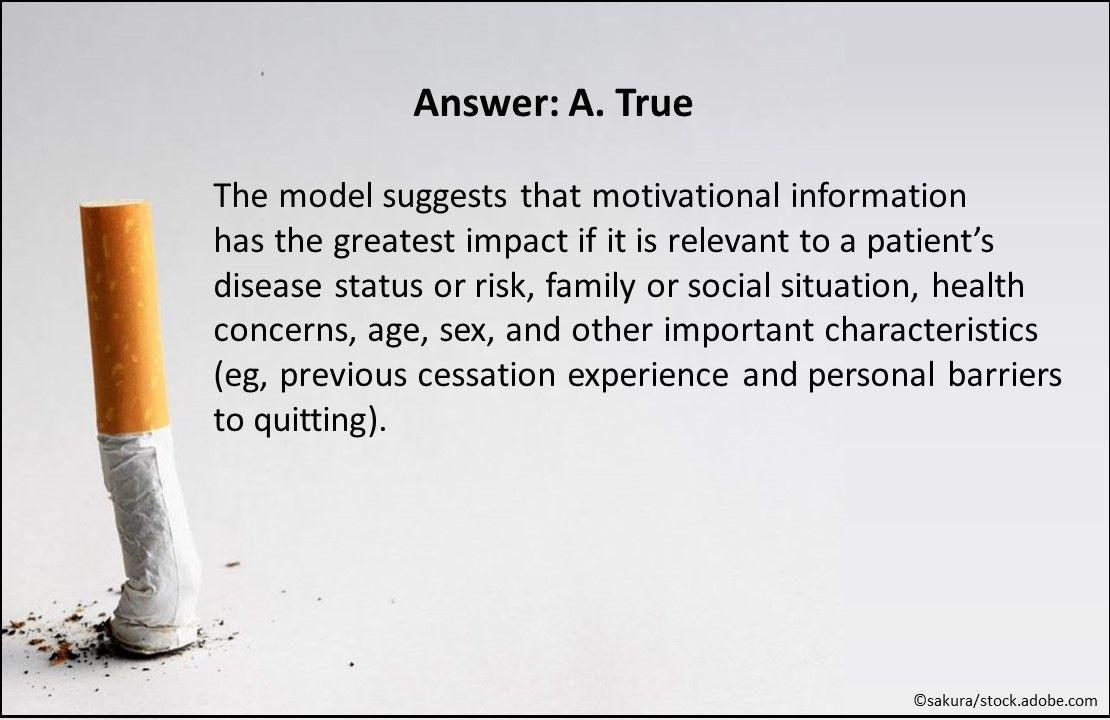
Answer: A. True. The model suggests that motivational information has the greatest impact if it is relevant to a patient’s disease status or risk, family or social situation, health concerns, age, sex, and other important characteristics (eg, previous cessation experience and personal barriers to quitting).
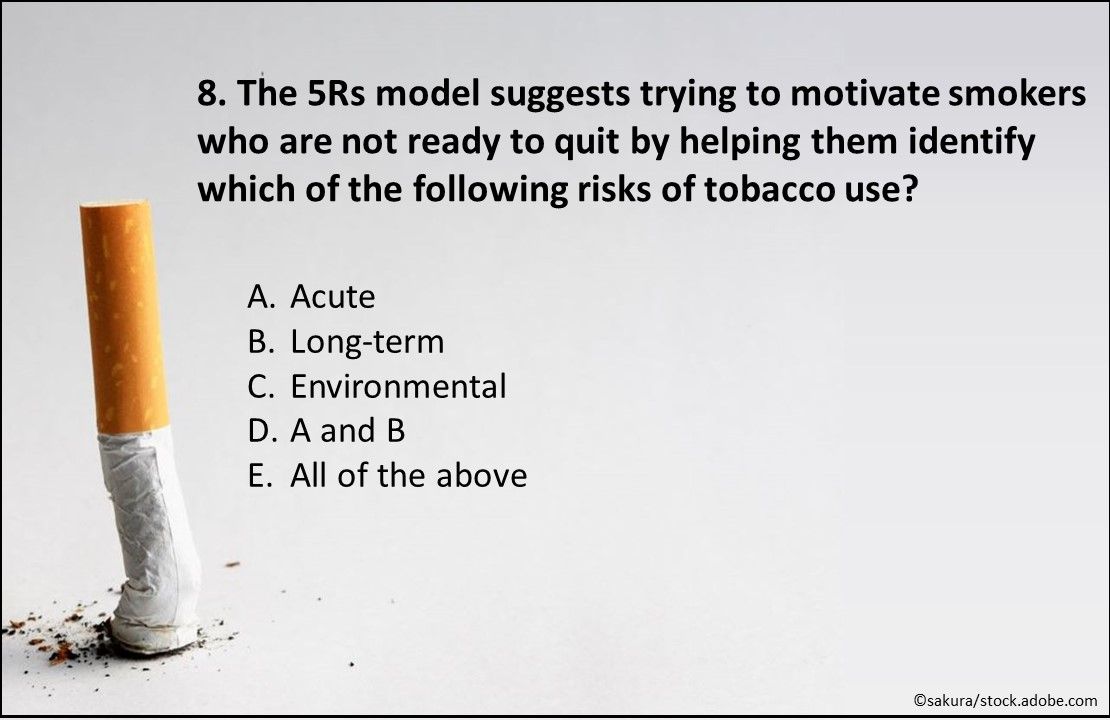
Question 8. The 5Rs model suggests trying to motivate smokers who are not ready to quit by helping them identify which of the above risks of tobacco use?
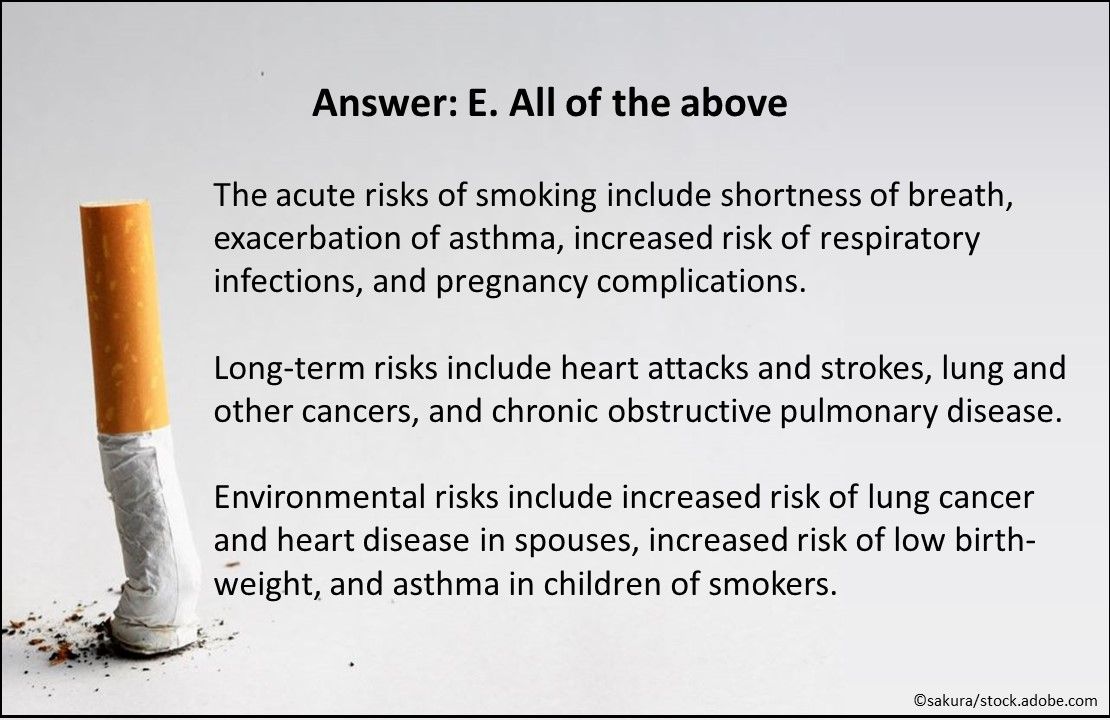
Answer: E. All of the above. The acute risks of smoking include shortness of breath, exacerbation of asthma, increased risk of respiratory infections, and pregnancy complications. Long-term risks include heart attacks and strokes, lung and other cancers, and chronic obstructive pulmonary disease. Environmental risks include increased risk of lung cancer and heart disease in spouses, increased risk of low birth-weight, and asthma in children of smokers.
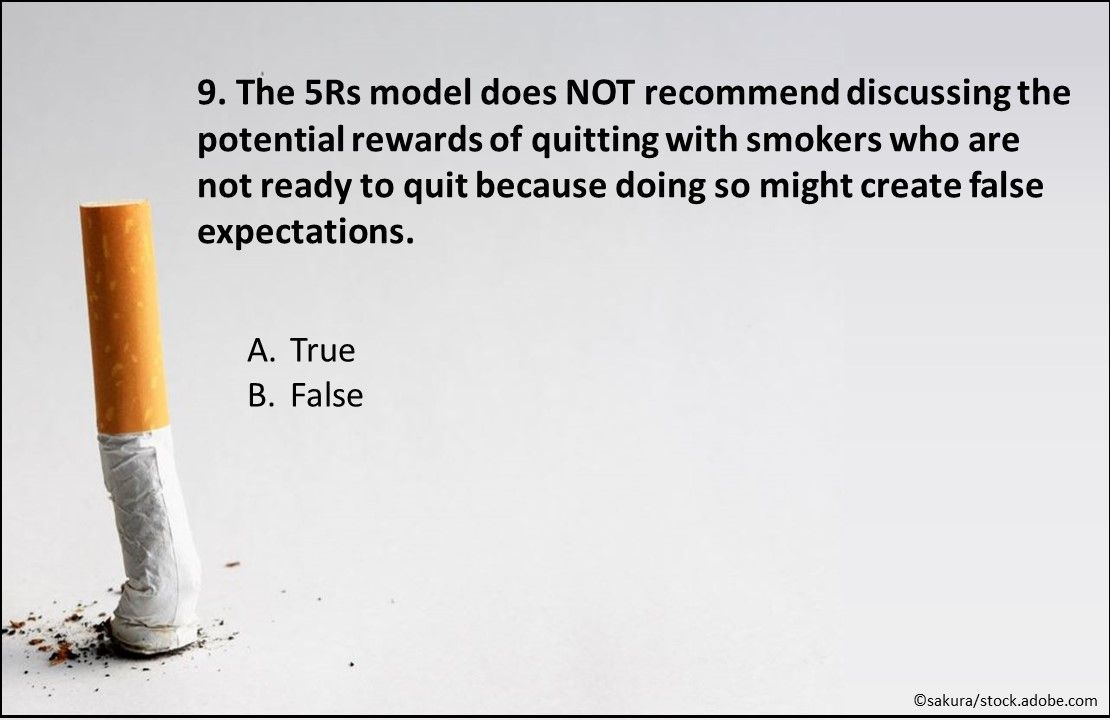
Question 9. True or false? The 5Rs model does NOT recommend discussing the potential rewards of quitting with smokers who are not ready to quit because doing so might create false expectations.

Answer: B. False. The model suggests focusing on both “risks” and “rewards” in discussions with patients who do not think quitting is important. Potential benefits of stopping tobacco use to point out include improved health and sense of smell, saving money, setting a good example for children, having healthier babies and children, feeling better physically, and improved appearance.
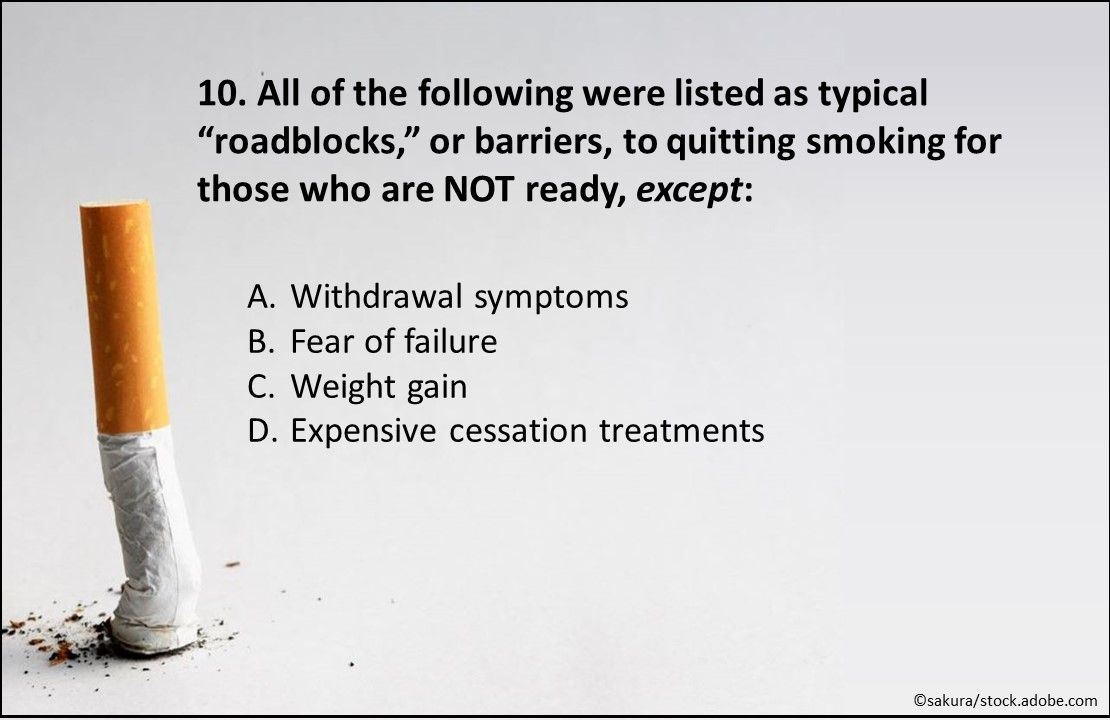
Question 10. Which of the above was NOT listed as a typical “roadblock,” or barrier, to quitting smoking for those who are not ready?
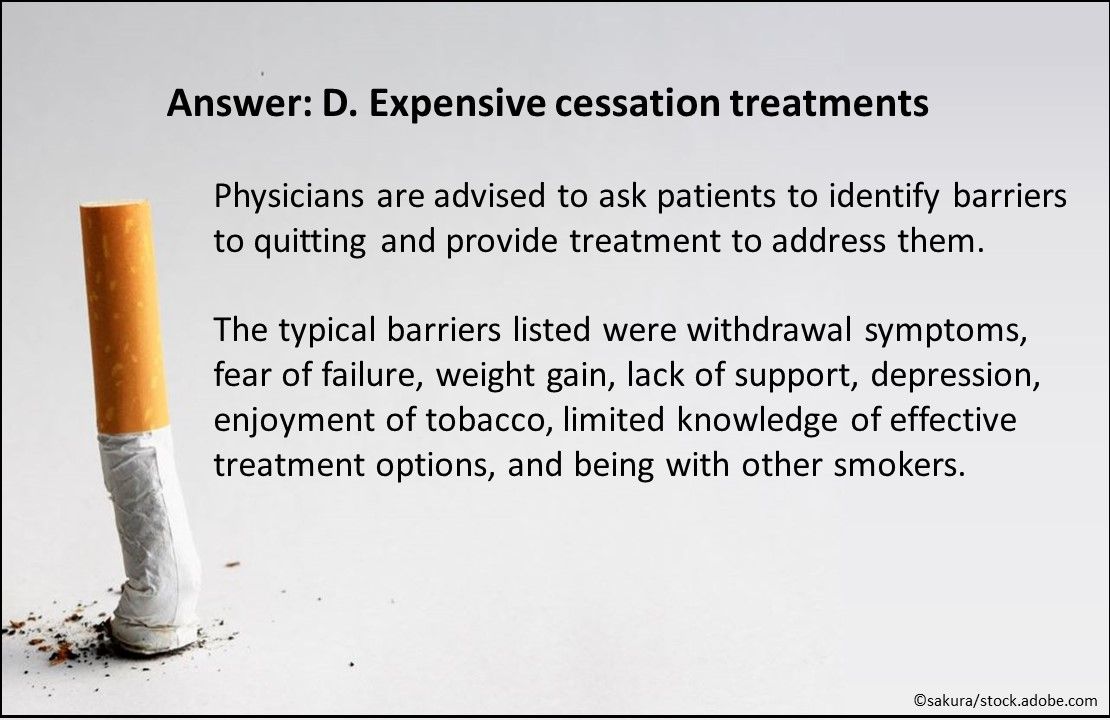
Answer: D. Expensive cessation treatments. Physicians are advised to ask patients to identify barriers to quitting and provide treatment to address them. The typical barriers listed were withdrawal symptoms, fear of failure, weight gain, lack of support, depression, enjoyment of tobacco, limited knowledge of effective treatment options, and being with other smokers. In the fifth portion, “Repetition,” PCPs are advised to repeat the intervention whenever an unmotivated patient visits.
Reference: World Health Organization. Toolkit for delivering the 5A’s and 5R’s brief tobacco interventions in primary care. https://www.who.int/tobacco/publications/smoking_cessation/9789241506953/en/. Published May 2014. Accessed June 14, 2019.
If all primary care physicians routinely asked their patients about tobacco use and advised tobacco users to quit, they could reach >80% of tobacco users each year, according to the World Health Organization (WHO). Physicians could motivate 40% of these smokers to make a quit attempt and help 2% to 3% of those who are receiving brief advice quit successfully. The WHO’s brief tobacco interventions toolkit for primary care physicians offers a quick and effective way to get it done. Scroll down for more.

